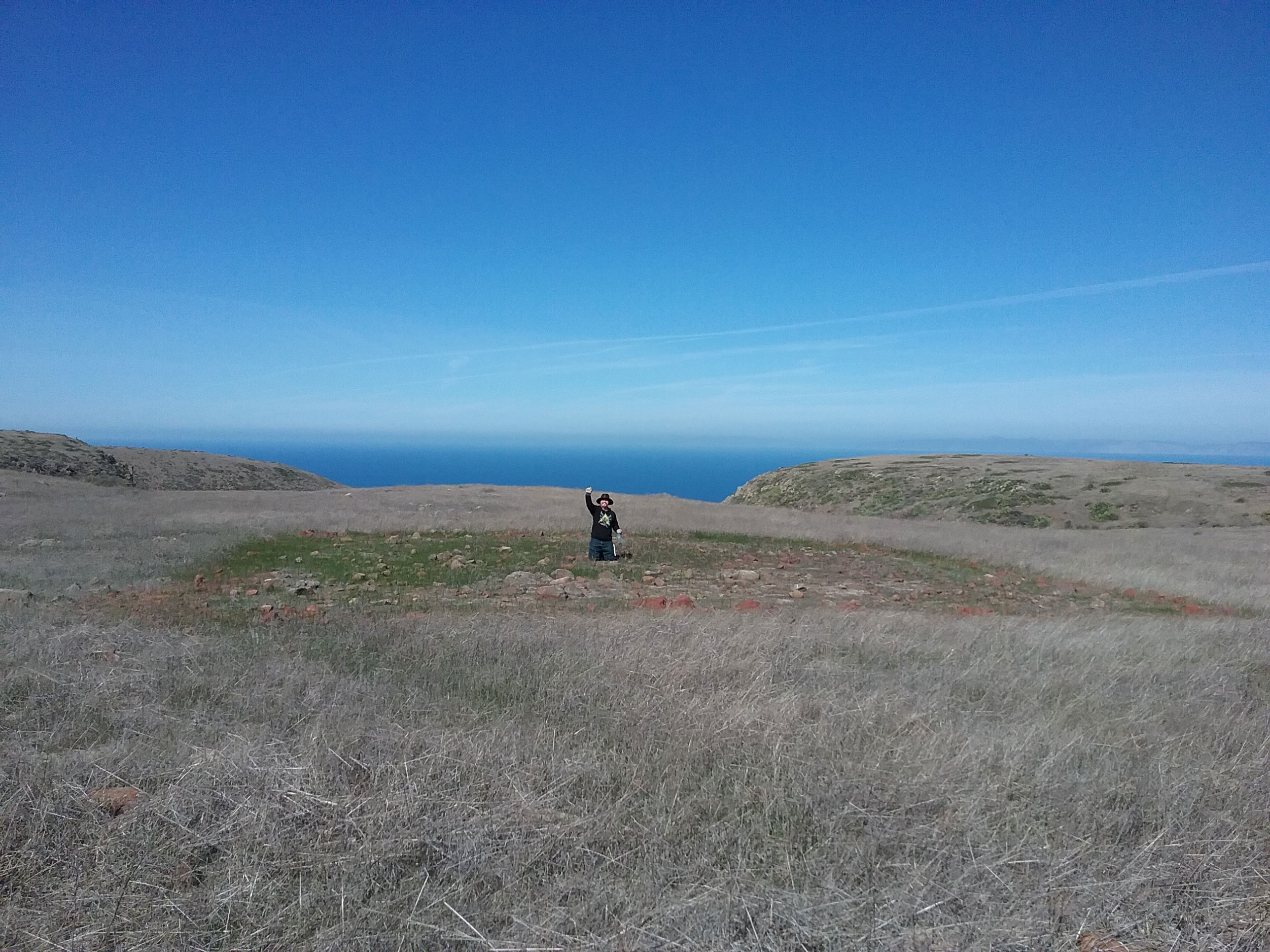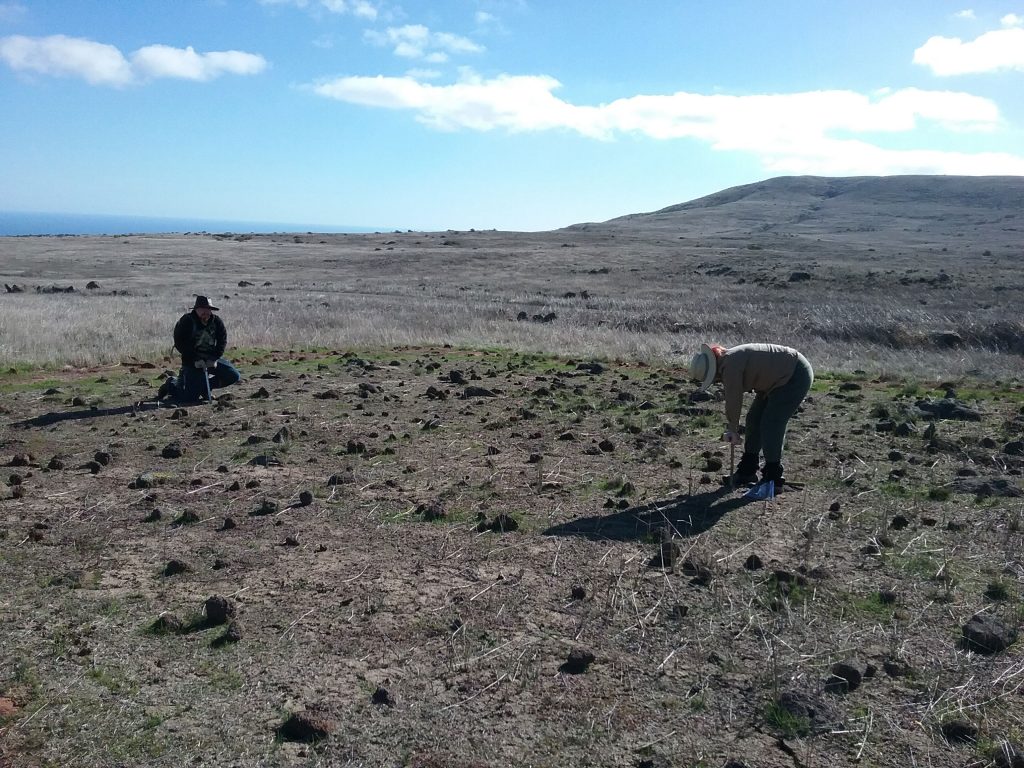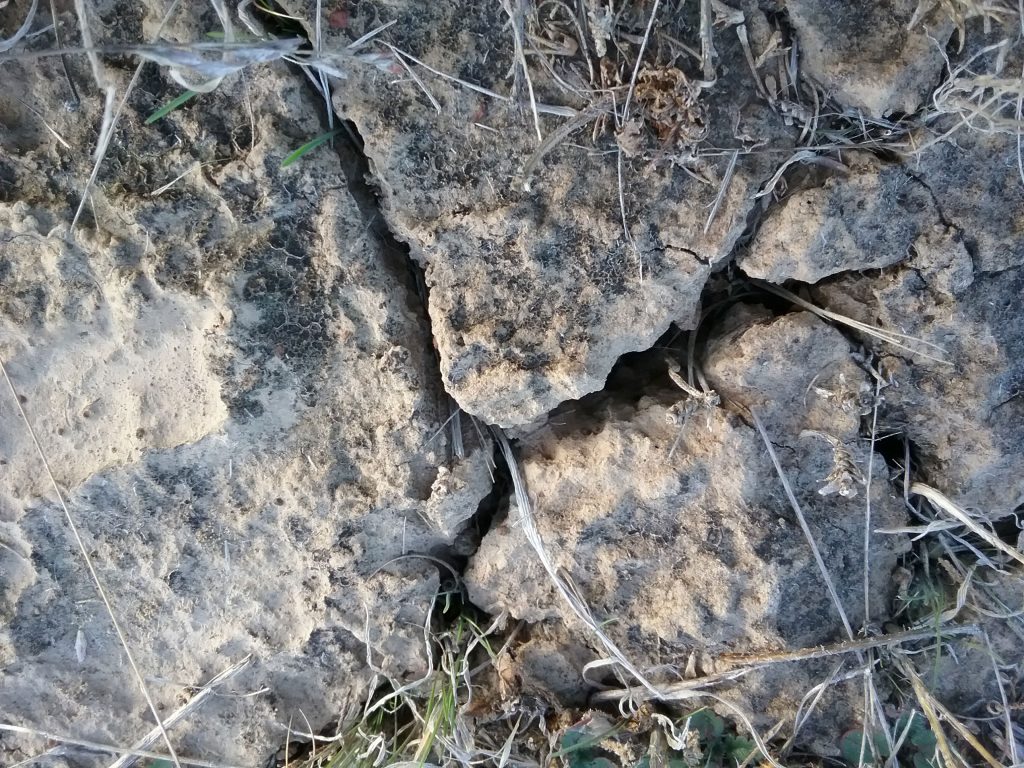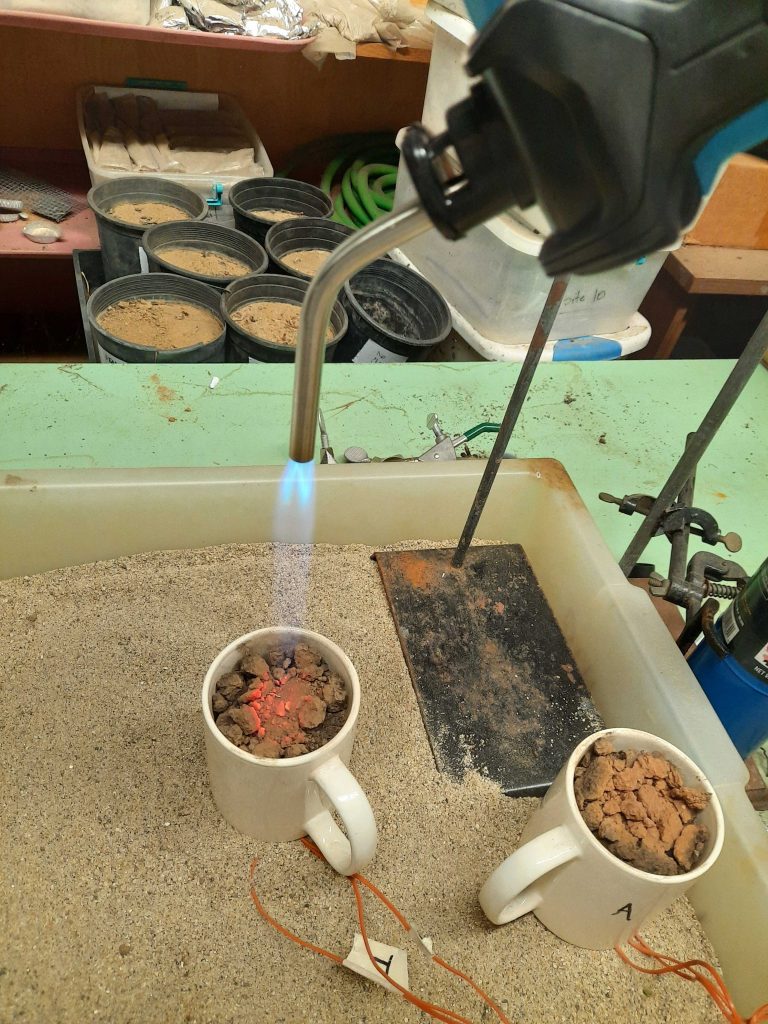Through a collaboration with SPAWAR (Dawn Lawson), SERG (Tom Zink), the USGS and others, we had the opportunity to study the effects of a prescribed burn experiment on soil microbial communities in a perennial grassland on San Clemente Island.
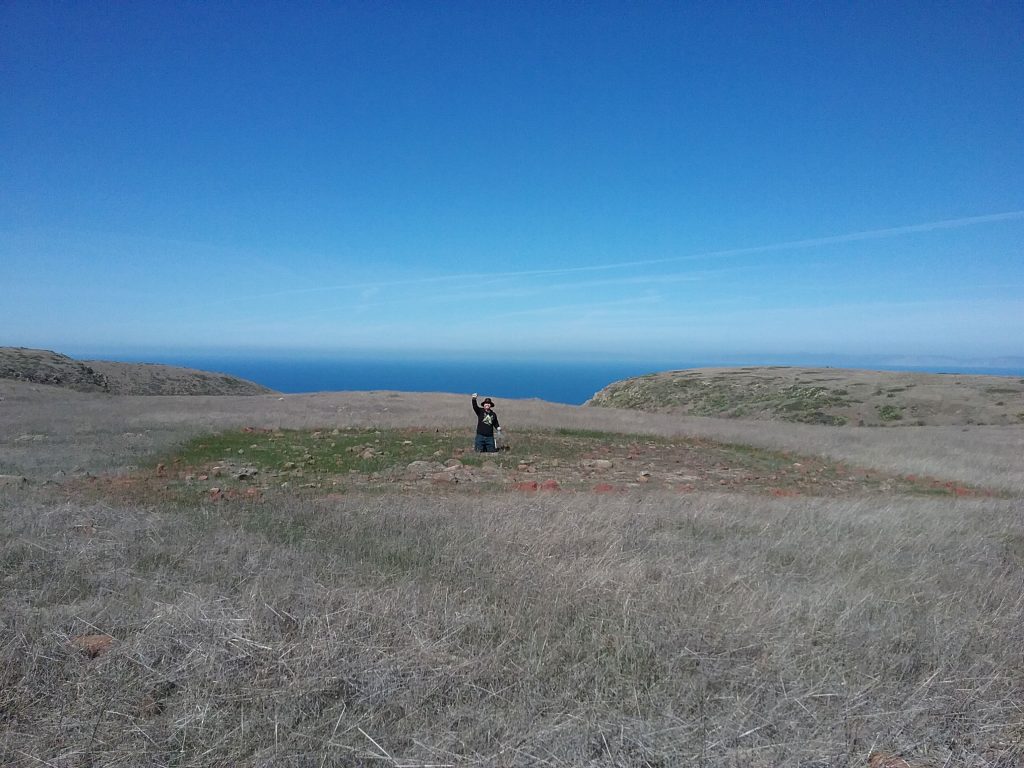
Prescribed fire is a potential tool for controlling exotic annual grasses and restoring the native perennial grass, Stipa pulchra. M.S. student, Ben McKinsey, and PhD student, Brianne Palmer, used this opportunity to study the impacts of fire soil microbial communities.
Ben found that fire favored stress-tolerant microbes, but had a larger impact in certain soil types. He also found that the native microbial community could feed back to influence establishment and growth of native plant species.
Brianne focused on biological soil crusts, communities of cyanobacteria, lichens and mosses that can serve important ecosystem services. Surprisingly, she found that crusts recover quickly after fire.
To follow up the field experiment, Brianne simulated wildfire in the lab, using a blow torch and coffee mugs. Science can be extremely fun…
